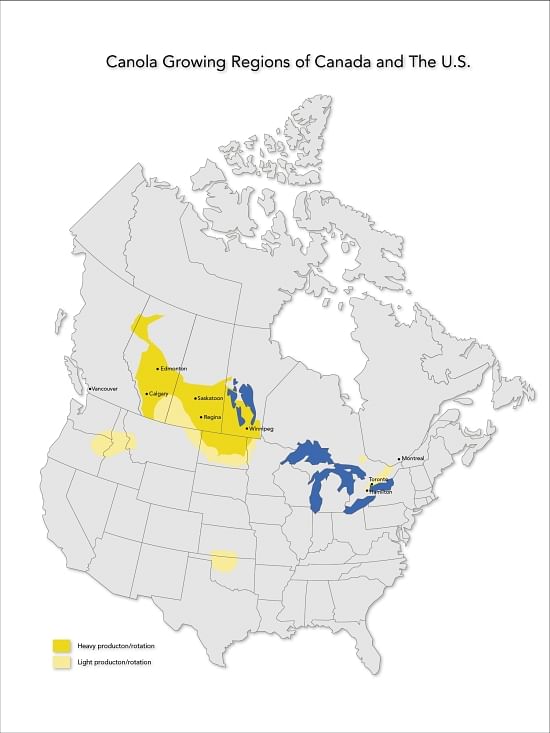Canola field
Canola 101

Canola oil is widely regarded as heart-healthy and versatile by health professionals and chefs, but some consumers may not understand why – or know what canola is in the first place.
Minnesota canola grower Rob Rynning explains:
"Canola is often confused with rapeseed, but the two crops and their oils are distinctly different both compositionally and nutritionally."Canola oil comes from the crushed seeds of the canola plant, which is a member of the Brassica family that includes broccoli, cabbage and cauliflower. It was developed in Canada through traditional plant breeding to remove two undesirable components (erucic acid and glucosinolates) found in rapeseed. To acknowledge these differences, the new plant earned a new name, canola – a contraction of "Canadian" and "ola" meaning "oil."
Rapeseed, although still grown in limited quantities in North America, is confined to production under contract for specific industrial uses, Rynning notes.
The oil extracted from canola plants is also one of the healthiest in the world. Doctors and nutrition experts laud canola oil for both what it does contain and what it doesn't. Of all common cooking oils, canola has the most plant-based omega-3 fat (11 percent) and the least saturated fat (7 percent) – half that of olive oil (15 percent). Canola oil is also rich in monounsaturated fat (61 percent) and free of trans fat.

Close-up of the Canola plant (Courtesy: Canolainfo)
"Since heart disease is the leading cause of death in the United States, it's critical to lower intake of saturated fat and to consume a moderate amount of healthy fats instead."In fact, the U.S. Food and Drug Administration authorized a qualified health claim on canola oil's ability to reduce the risk of heart disease when used in place of saturated fat.
"Canola oil is simply a smart choice as an everyday cooking oil."
Research has shown that the oil's high unsaturated fat content (93 percent) helps lower "bad" LDL cholesterol, thereby reducing the risk of cardiovascular disease. Unsaturated fats are made up of mono- and polyunsaturated fats, including omega-3 and omega-6 fats.
Roberta Duyff, M.S., R.D.N., author of the American Dietetic Association Complete Food and Nutrition Guide:
"The types of omega-3 and -6 fats that are found in canola oil can be considered 'essential' in the diet because the body can't make them on its own."
"Canola oil is higher in omega-3 fat than other common cooking oils so it's an easy way to get some of this often underconsumed nutrient in the diet."

Canola oil is widely used for the preparation of french fries, in the factory, at home and in restaurants
Nancy Hughes, a professional recipe developer and cookbook author
"I love cooking with canola oil because it's incredibly versatile."
"I use it for sautéing, searing, roasting, baking, stir-frying, vinaigrettes – you name it. The fact that it's healthy to boot makes my decision in the kitchen even easier."

Regions in North America where Canola is grown
Like to receive news like this by email? Join and Subscribe!
Get the latest potato industry news straight to your WhatsApp. Join the PotatoPro WhatsApp Community!
Sponsored Content
Sponsored Content
Sponsored Content
Sponsored Content








